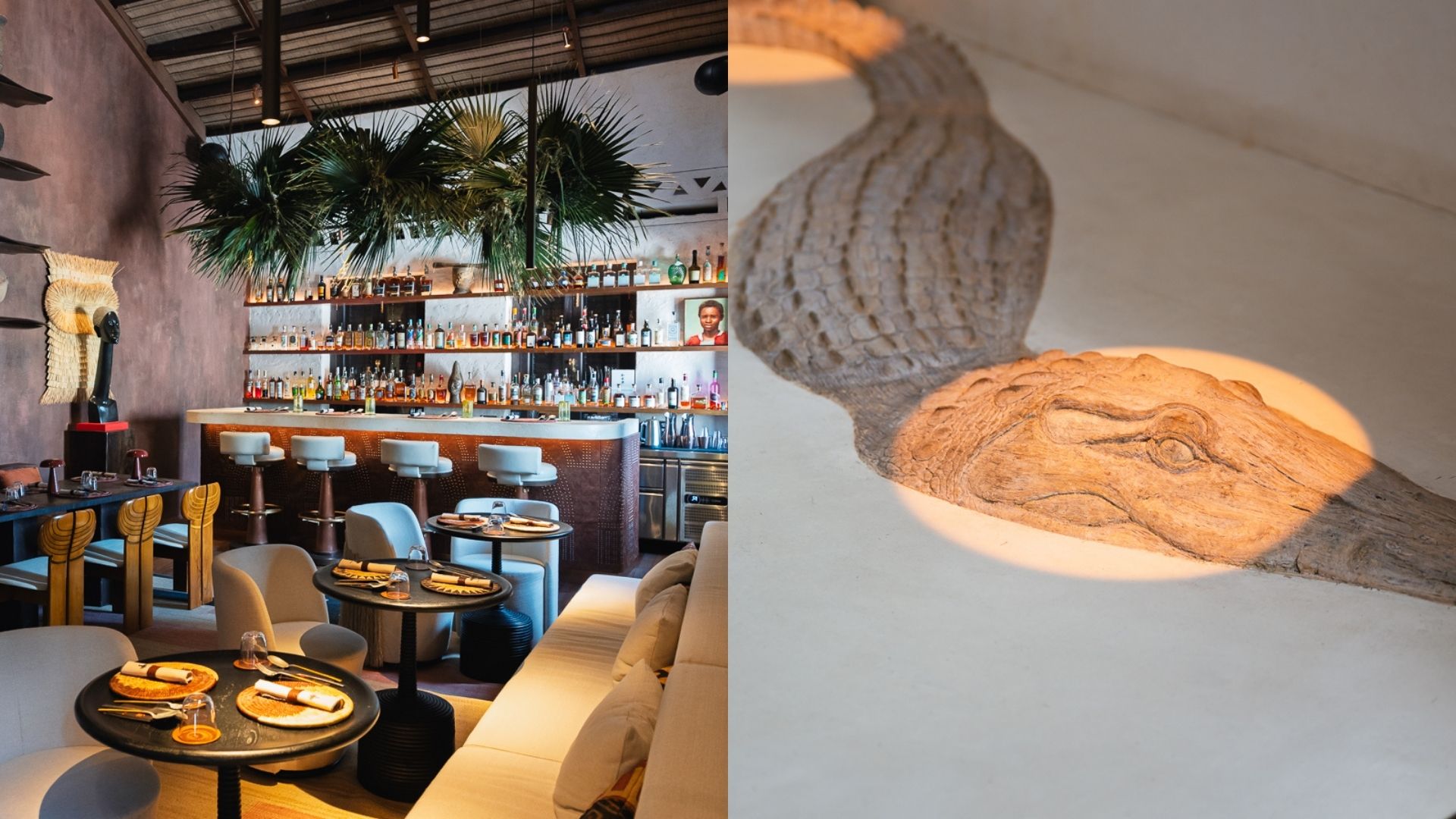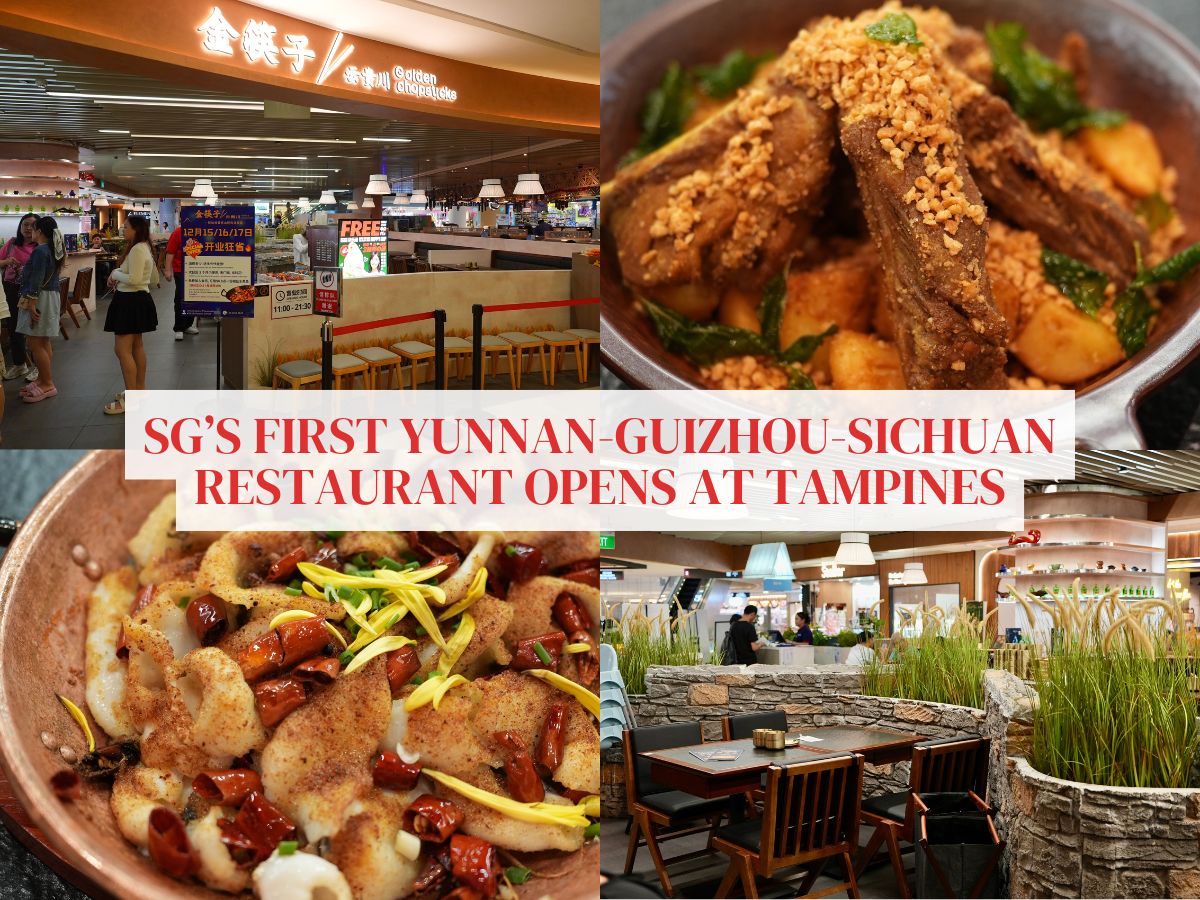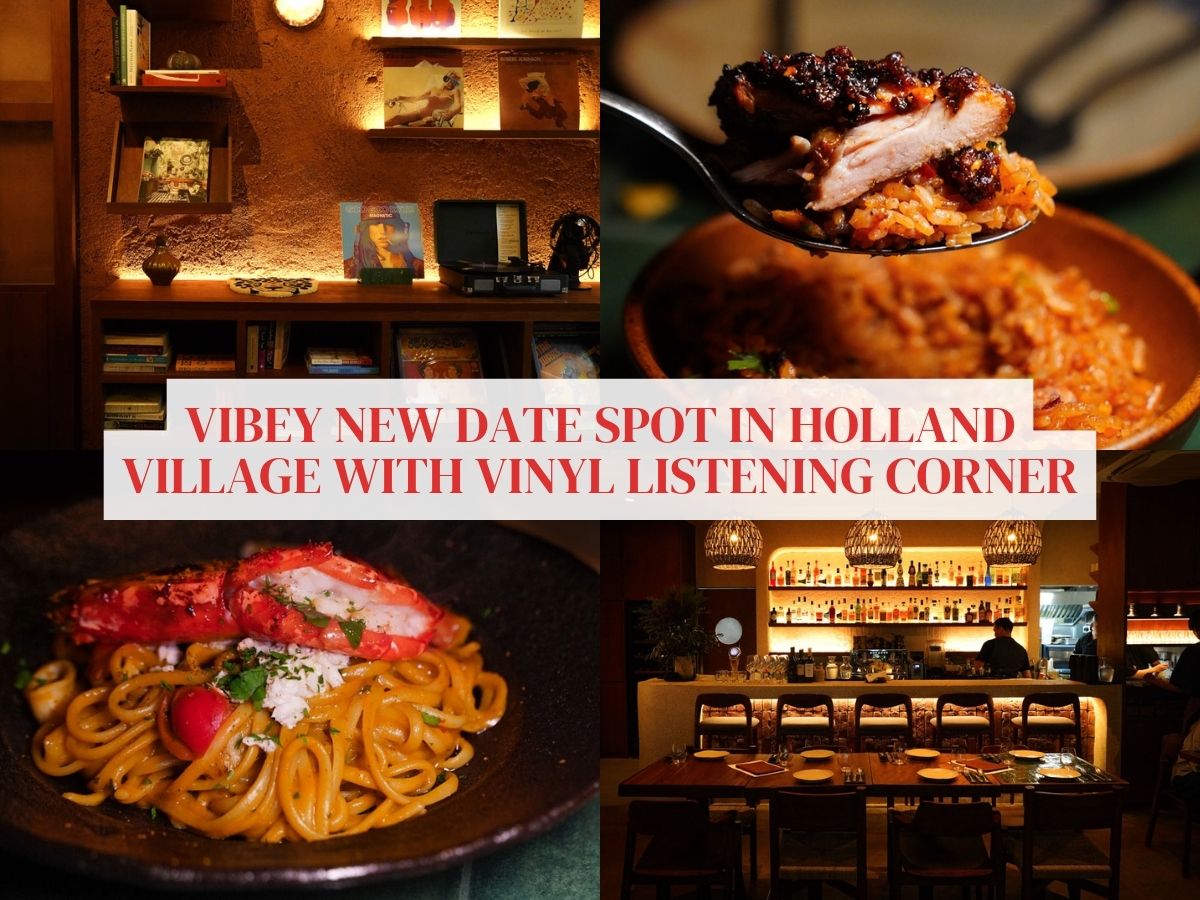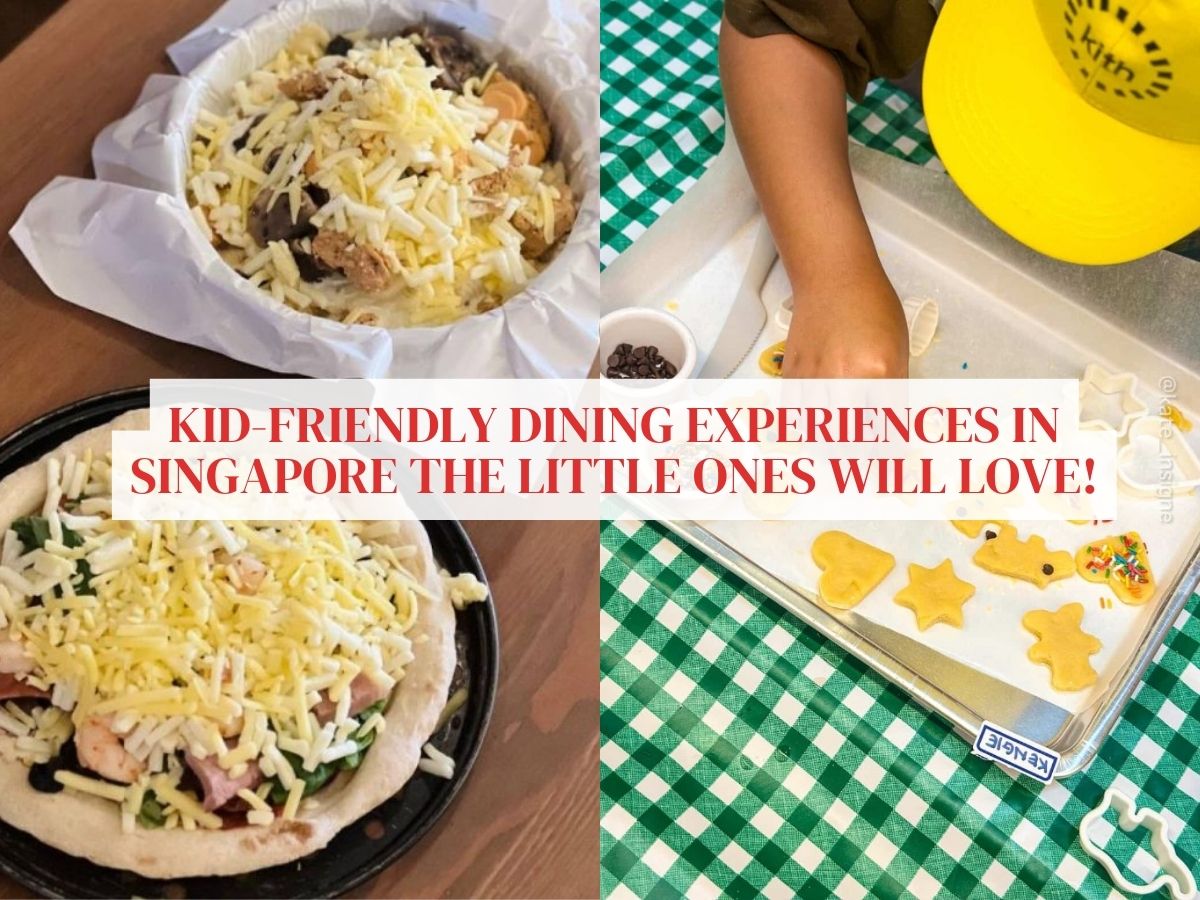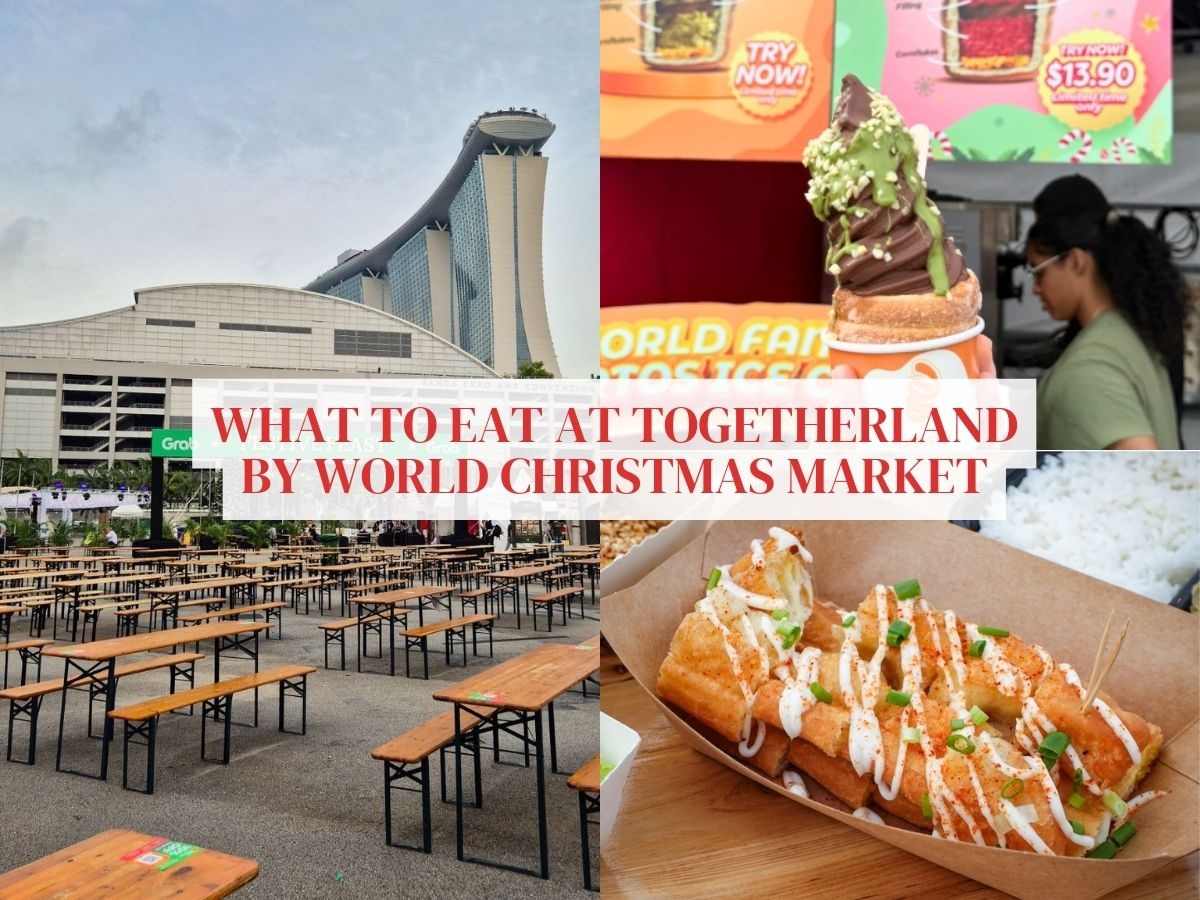The Art of Decor: How Tamba’s stylish aesthetics creates a one-of-a-kind modern African experience
Nowadays, decor plays a very important role in the dining experience.
Cafe vibes are getting sleeker, and restaurant interiors are becoming more sophisticated and intricate.
The art of decor is inherently complicated and multi-faceted, with meticulous planning required to craft an environment that’s both stylish, synergises with the concept, and elevates the food and drinks.
Singapore has so many gorgeous restaurants, but few of them are as impressively congruent and visually stunning as Tamba, a modern African restaurant at Duxton.
An homage to Tamba Rings Boima
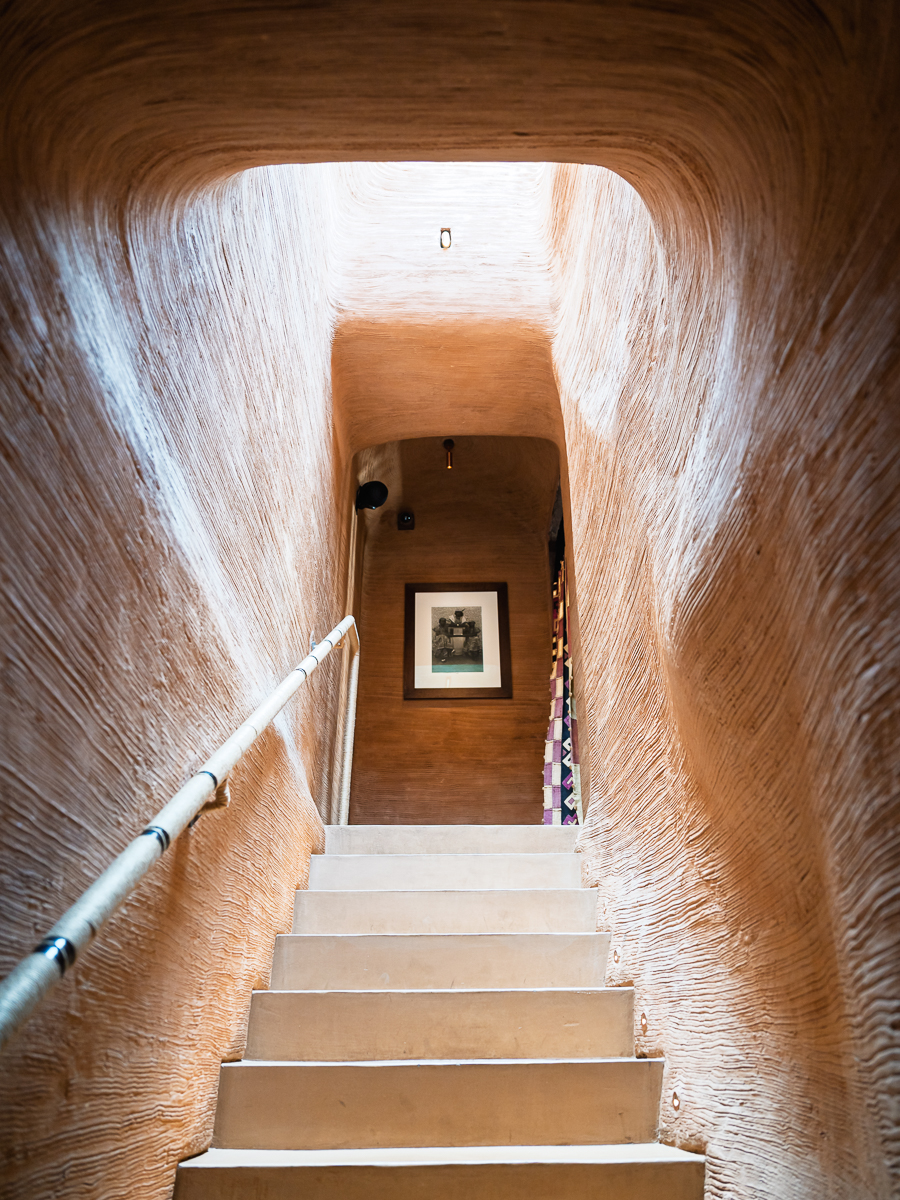
Many people would have seen photos of Tamba, which was one of the hottest openings of 2024. In fact, it was near impossible to grab a seat in its first few months.
The restaurant’s entrance on the ground floor, which leads up to the dining space on the second floor, is a spectacular melange of textures and set to a clay wall rugged with hand-etched lines.
If you climbed up its stairs during the day, you’d be faced with a skylight that gently illuminates the stairwell, like a scene out of a nature documentary.
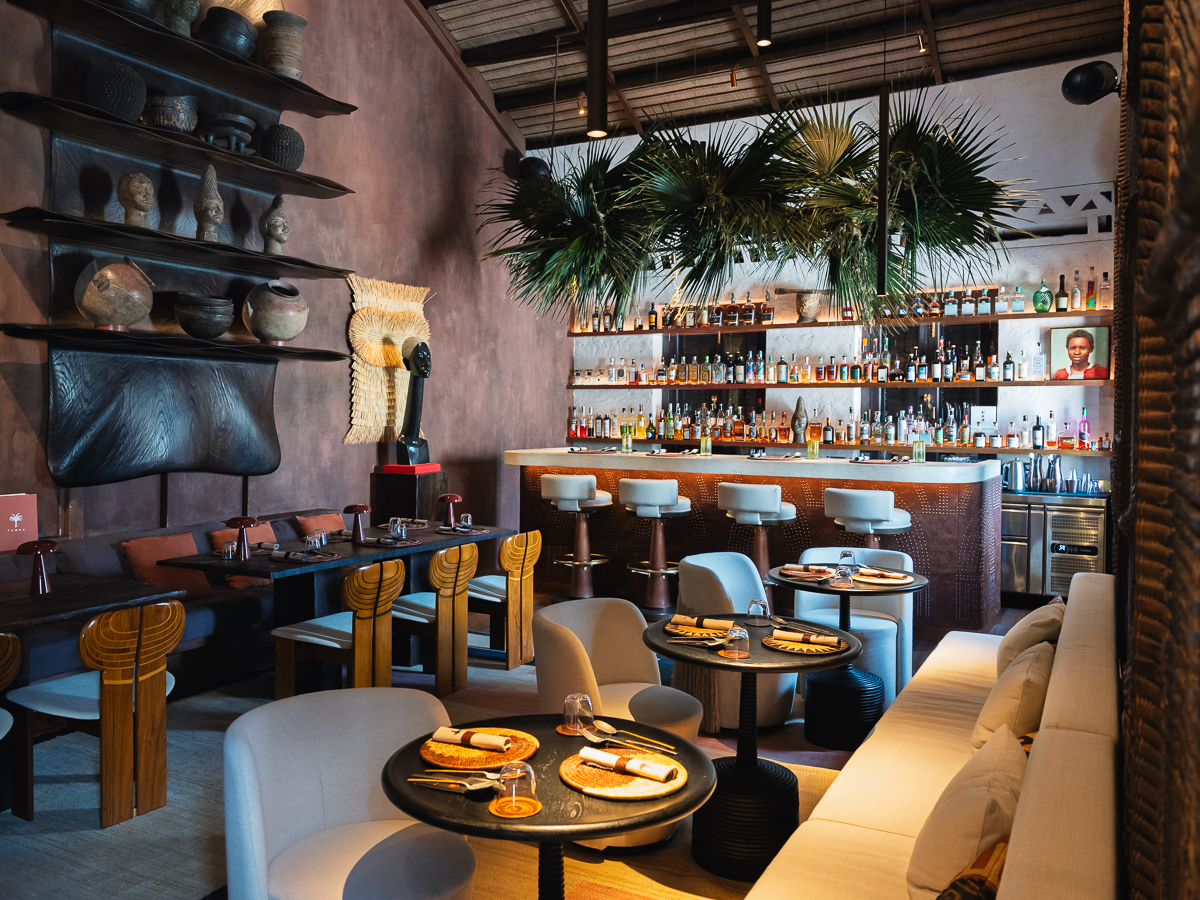
Then, once you step into Tamba’s capacious dining space, you’re immediately made to feel at home, with the fleet of lounge chairs and art pieces — almost like you’re in a friend’s living room.
Having been immersed in Tamba’s ambience on multiple occasions, we had many questions for general manager Joma Rivera, 34.
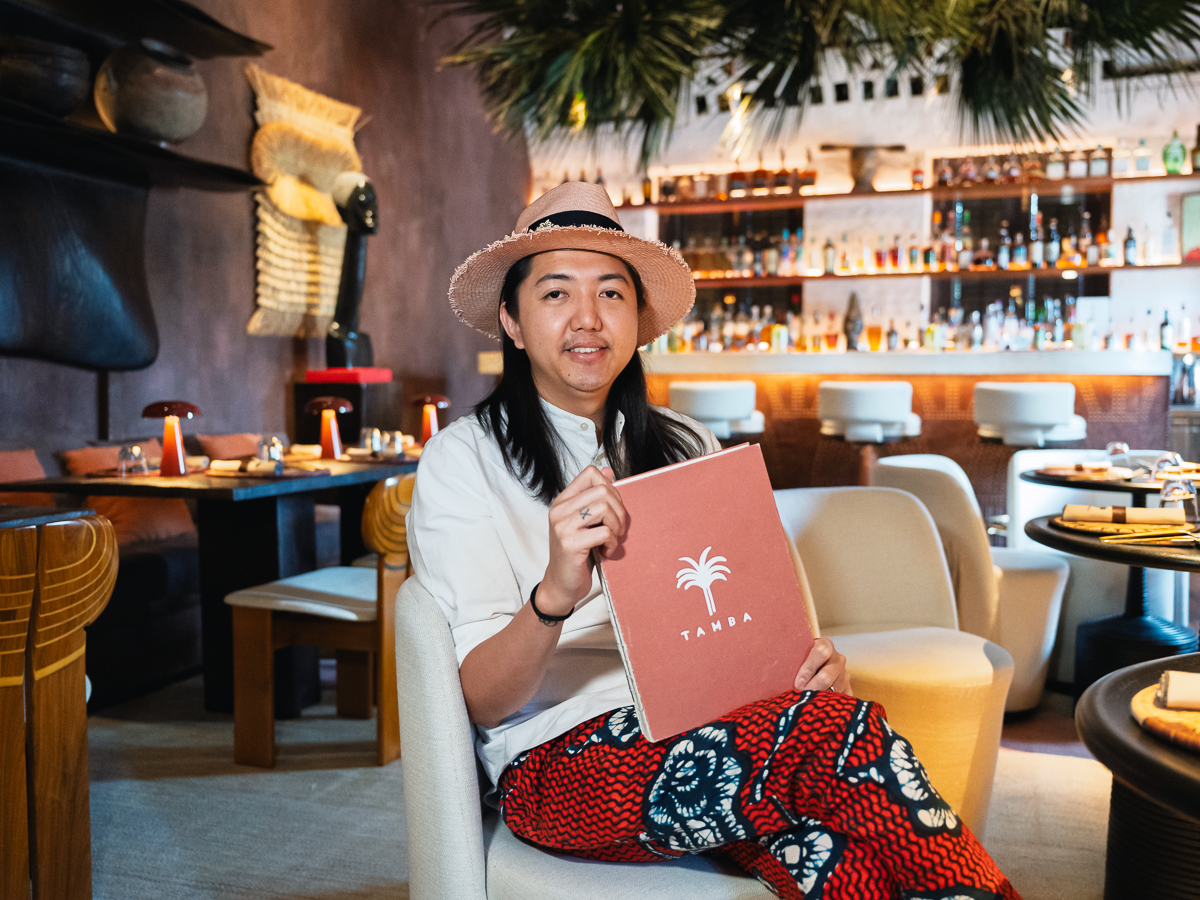
How did the whole concept come about and what inspired the little details in each nook and cranny?
Tamba is a concept by Kurt Wagner — he grew up in western Africa and is also the brains behind Kafe Utu, another popular African-inspired concept just down the road, at Keong Saik.
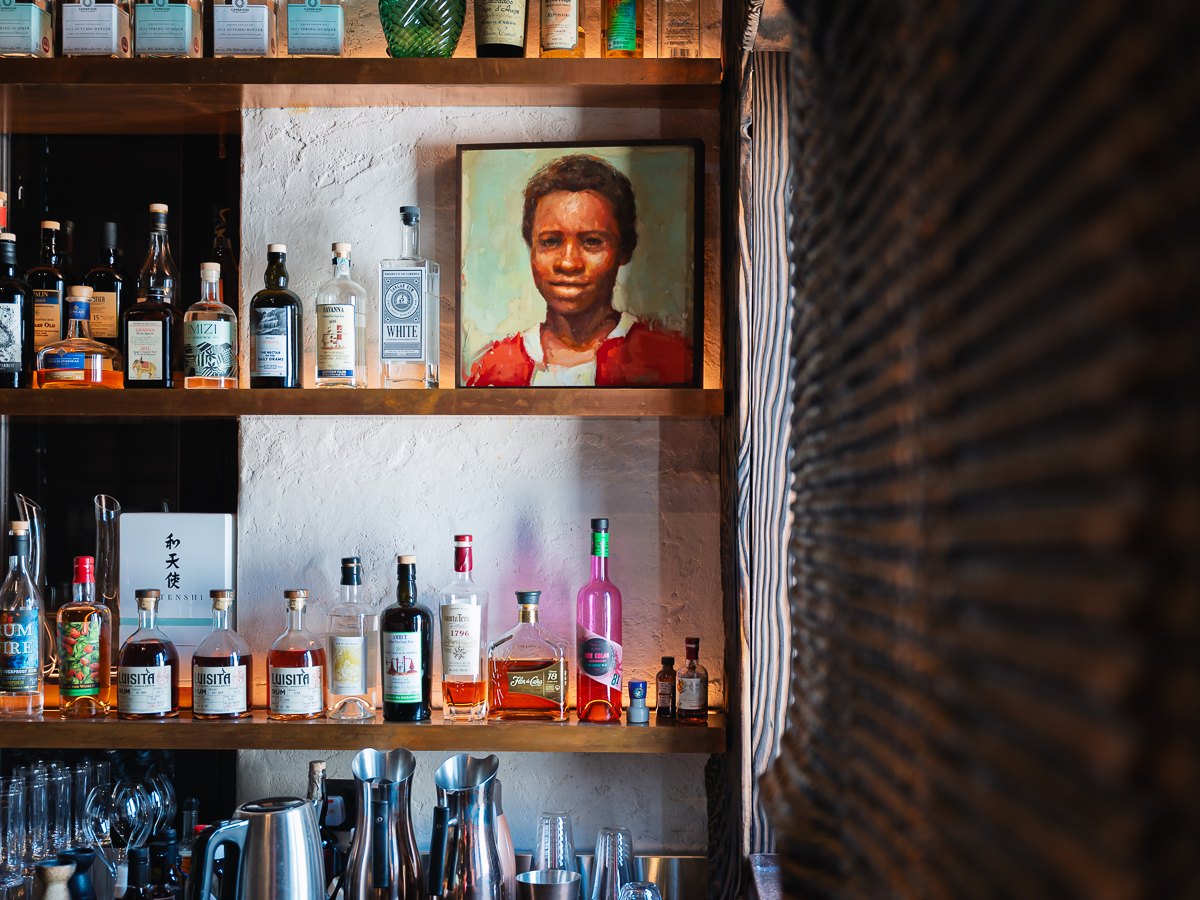
“The space is actually named after Kurt’s late brother, Tamba Rings Boima, and he wants to celebrate his life and their precious memories with the food, music and ambience,” says Joma, on the concept behind the restaurant.
The restaurant, in essence, is built with the vision of bringing the spirit of West Africa to Singapore.
But the vision means designing a space that proudly incorporates various aspects of African culture, and for such a demanding project, Kurt specially enlisted a design team from Spain.
In their bid to create the perfect mise-en-scene, the team pored over all manner of materials, fabrics and artwork, and fastidiously put everything together in line with Kurt’s vision.
Clay, straw, and terracotta
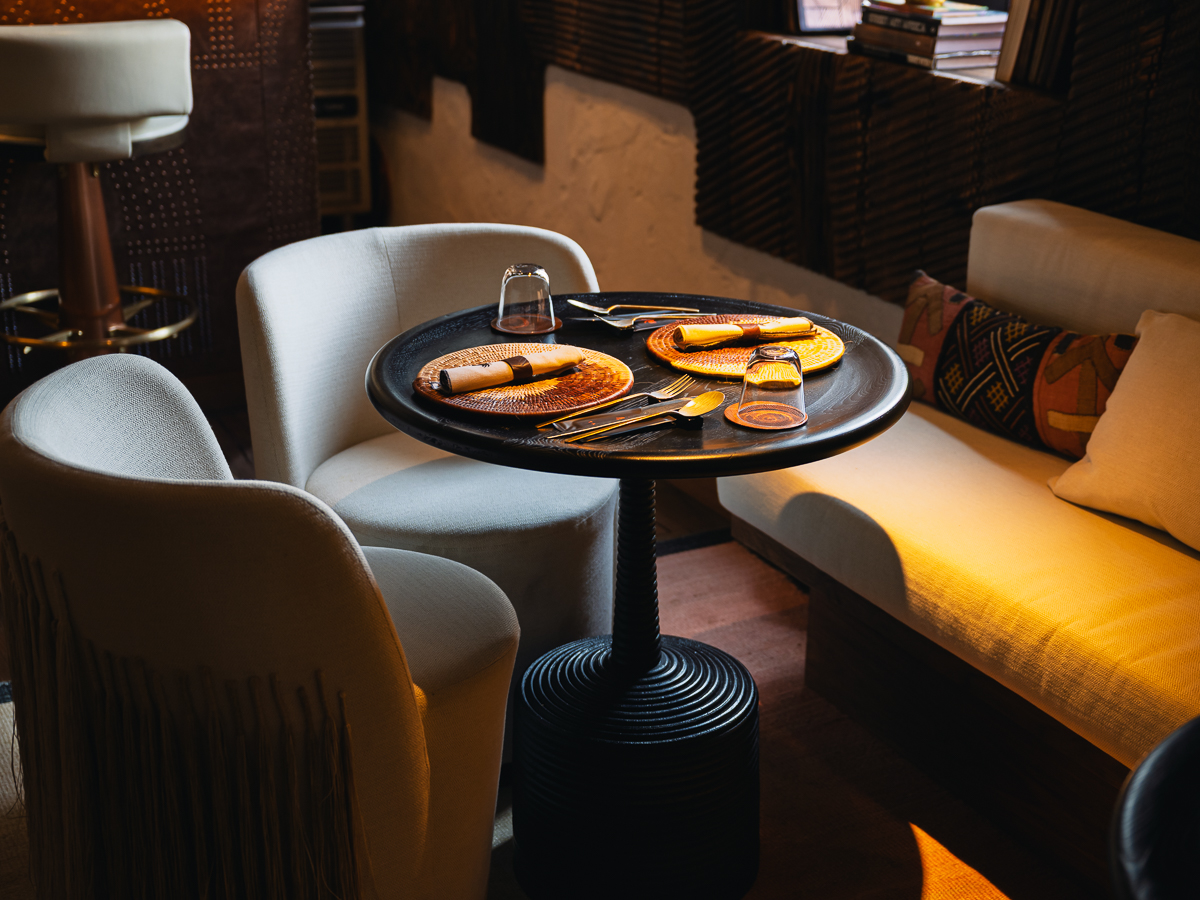
All that research has culminated in the most intricate of minutiae, down to the hand-crafted cutlery used in the restaurant.
While often overlooked, Tamba’s grungy gunmetal-hued cutlery is specially sourced from the States, handcrafted by husband-and-wife duo The Wright Revival.
Then there’s the colour — some would notice that Tamba is a space awash in earth tones, melded elegantly together with pops of green, without a hint of garish pastels or bright tones to break the immersion.
It’s a very deliberate choice, one that starts from when you first lay eyes on the restaurant.
Your attention is first captured by the striking terracotta paintjob on the shophouse facade, but by the time you’re seated at the main dining area, the palette has shifted to lighter sandy tones and cool chocolates.
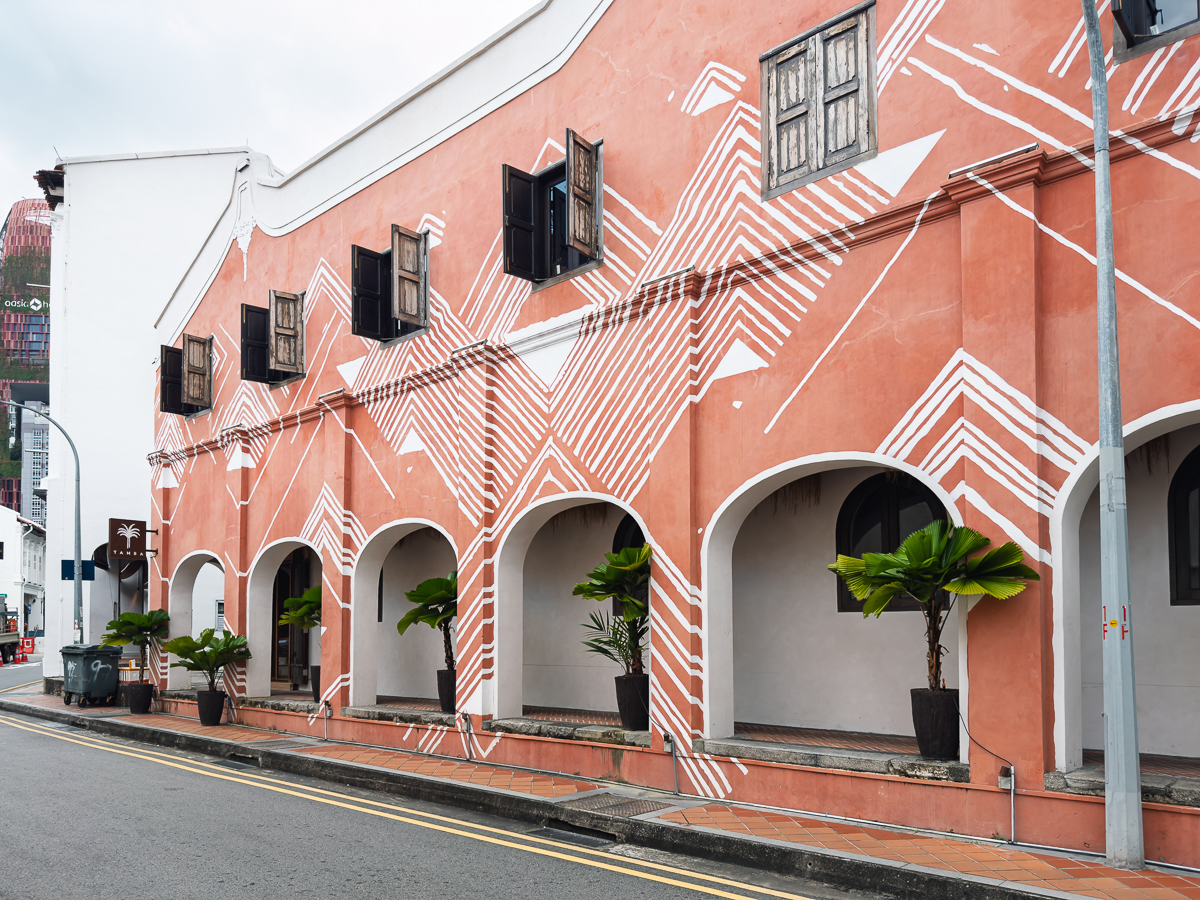
There’s also the matter of textures and material.
Clay is a prevalent element in Tamba’s fixtures, with everyday clay vessels transformed into lamps in the lobby, while the dining space is punctuated by clay vessels and artwork, too.
The aforementioned staircase and hand-etched clay walls also take inspiration from sandstone cliffs and terracotta earth.

Those etchings are painstakingly carved using a kitchen fork, replicating the uneven, textured grooves of natural rock formations that have been left to the mercy of wind and time.
Faux-straw — straw is a material not often used in upscale restaurants — is also heavily featured and can already be seen at the entrance, with lanterns lining the walkway.
The team has also made full use of Tamba’s high thatched roof — they’ve installed a stately, upsized lantern that overlooks the entire dining room.
The essential embellishing

All these considerations have built a solid foundation for the Tamba experience, but it’s actually the deft embellishments that truly fill the restaurant with life.
One such element is the carefully curated artwork that fills out the dining space.
In particular, the ensemble of photos — with Africans as protagonists — that litter the wall add a voguish modern touch, and you also have impressive claywork that lends a tasteful rusticness to the restaurant.
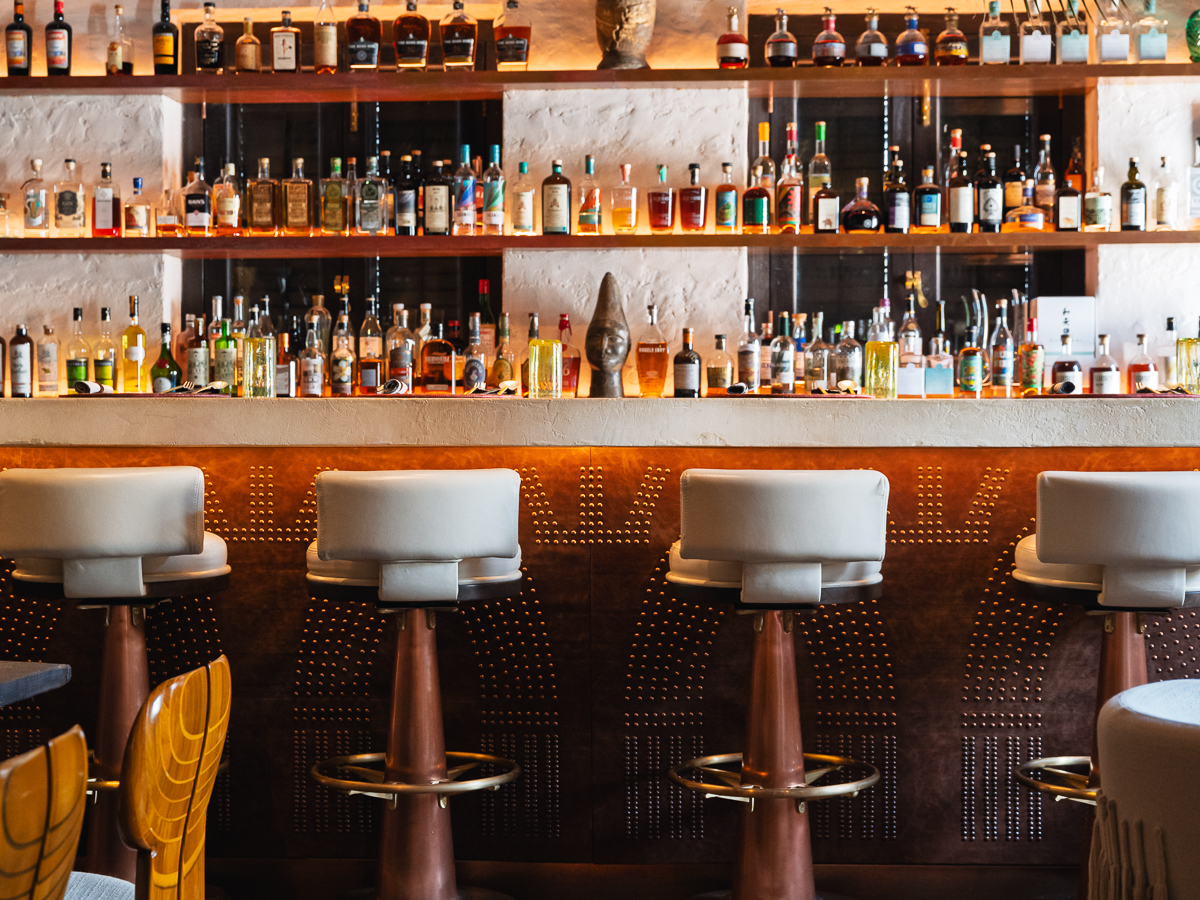
“We involve a lot of art from West Africa. For example, we have a piece from photographer James Barnor, who’s from Ghana,” Joma explains.
He also adds that one of his favourite fixtures in the restaurant is the bar, which is wrapped in a leather cover: “It’s embedded with copper tacks that are inspired by scarification, a practice adopted by various tribes in Africa, and Tamba also had his own on his back!”
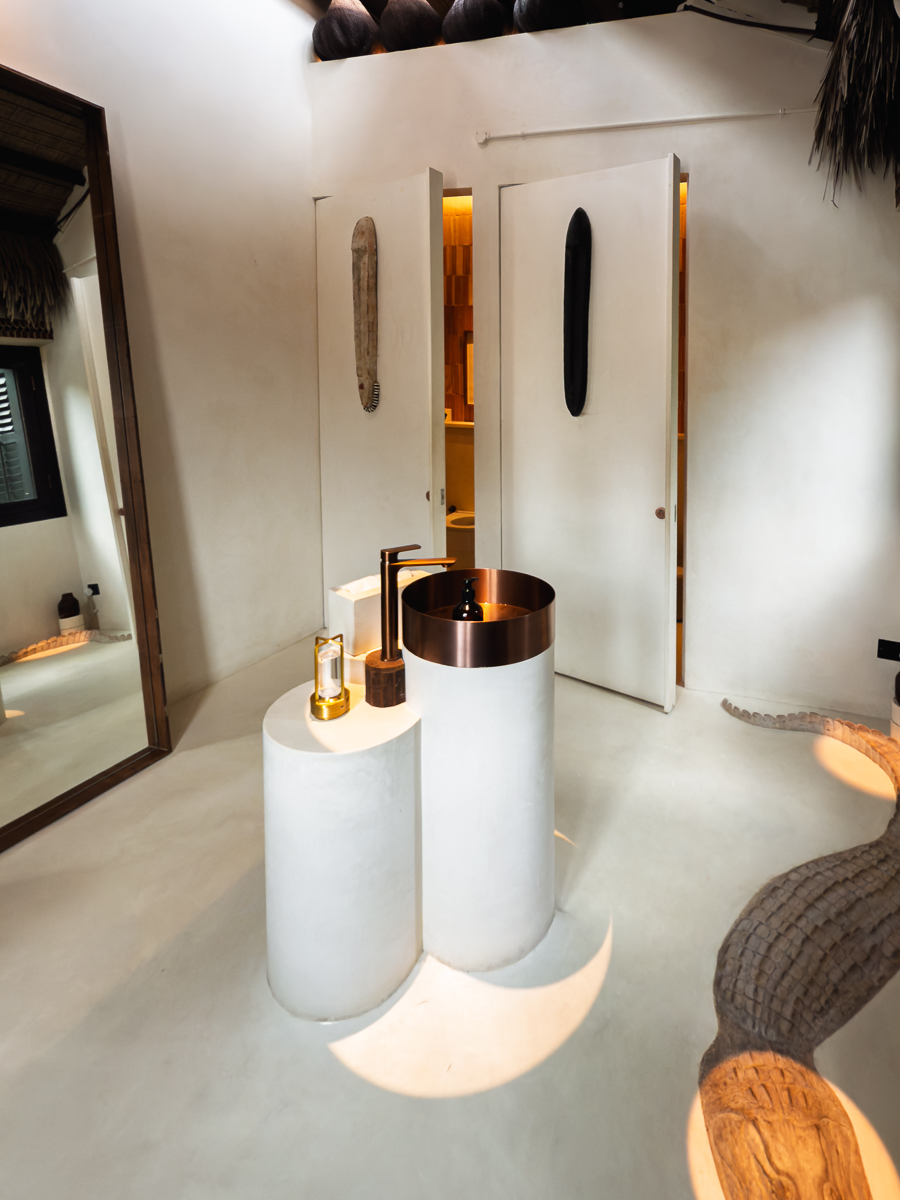
However, the most memorable piece of art for us in the restaurant turned up in the most unexpected spot: The toilet.
To us, Tamba must have the most gorgeous toilet in Singapore, partly due to the smooth alabaster surfaces and brass hardware, but mostly due to Suchu.
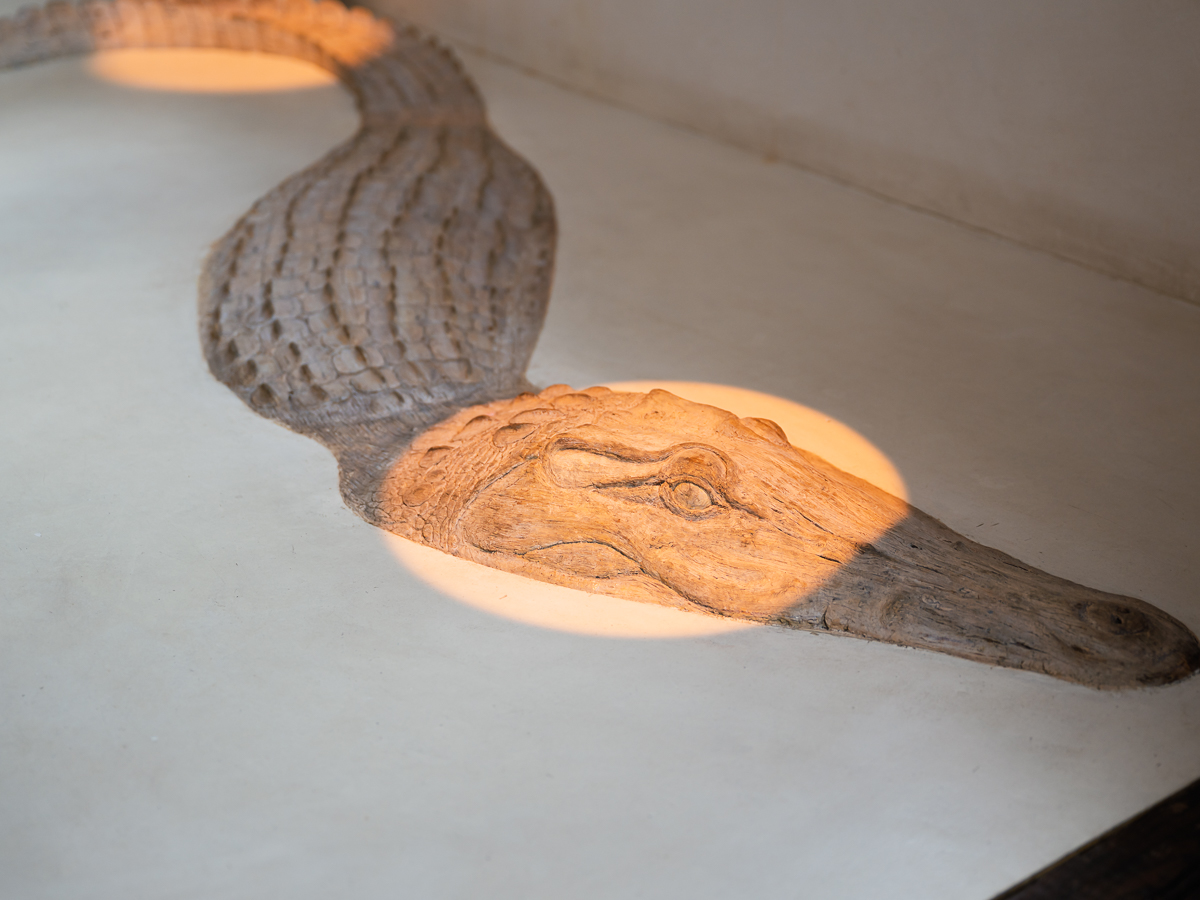
Who, or what, is Suchu? It’s the restaurant’s pet crocodile.
It’s a hyper-realistic paper sculpture of the West African crocodile that’s made to look like it’s submerged in the floor, by Singapore artist Keng Lye Cheok.

And, while it’s not part of the main dining room, there’s actually a little vertical garden that can be seen on your way to the washroom and guess what?
It’s designed by Patrick Blanc, a French botanist who has installed gardens in cities such as Dubai, Shanghai and even in Singapore’s Changi Airport — how cool is that?
Tamba’s food and drinks
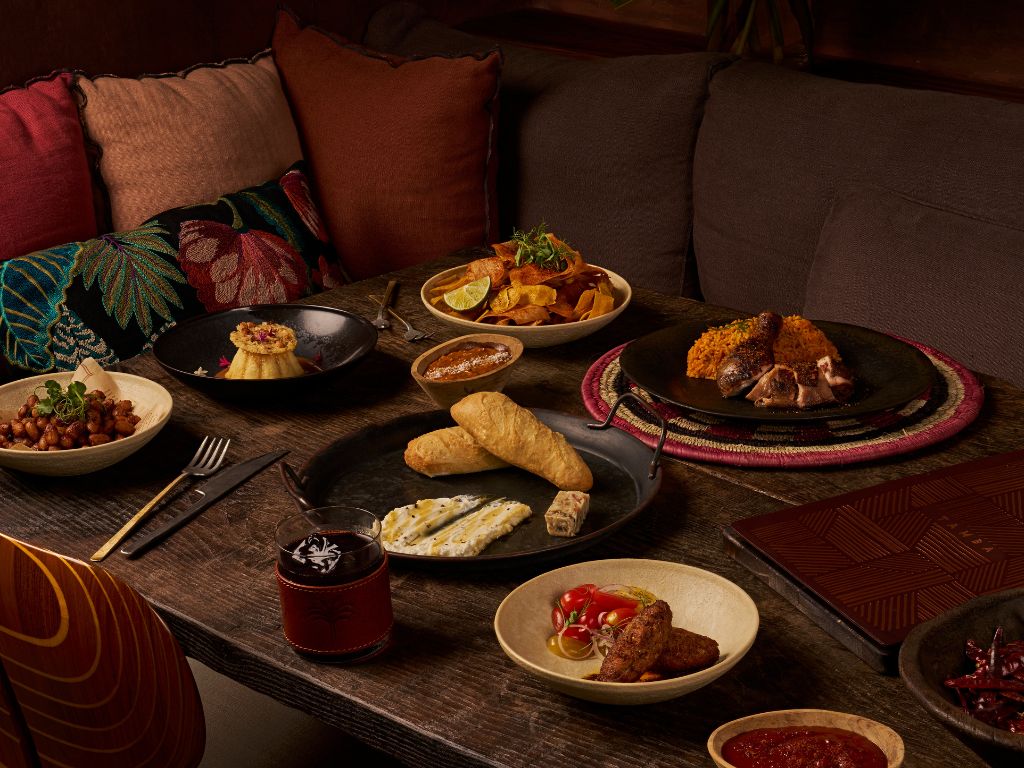
We’ve seen the design, so how does the food tie into the concept?
Tamba’s menu is a collection of myriad West African flavours and group executive chef Darren Chia travelled to countries such as Ghana and Kenya to meet local producers and learn the idiosyncrasies behind the ingredients.
It’s perhaps something a bit more alien to most Singaporeans, but something profoundly personal for Kurt.
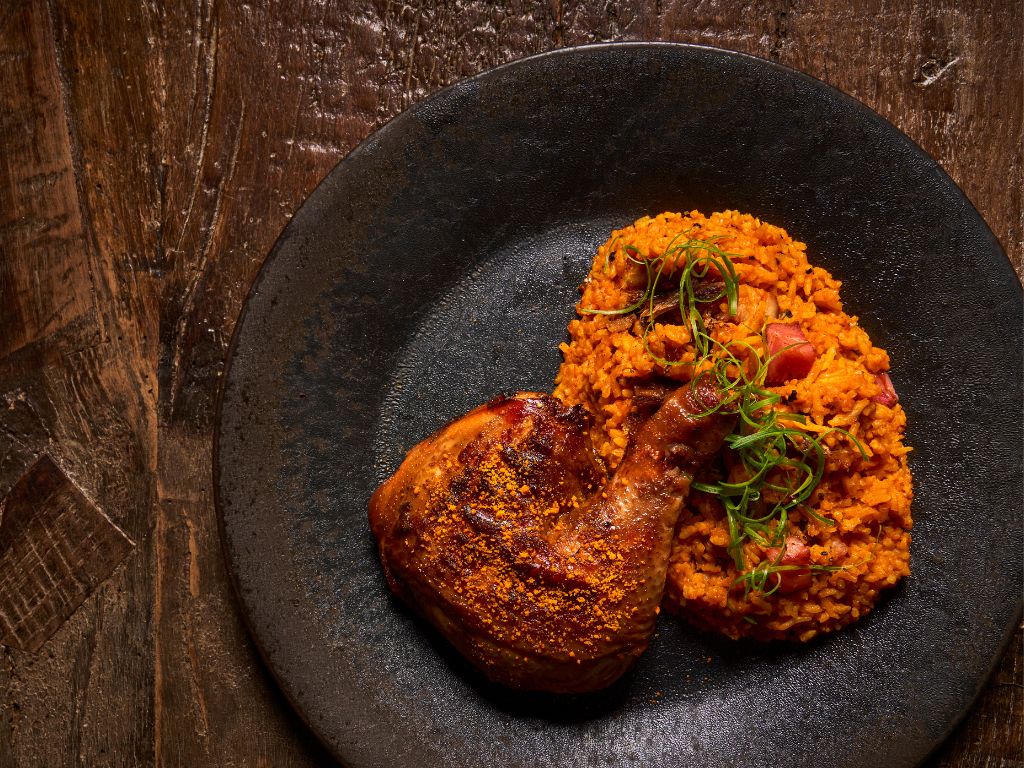
The most succinct way to put it is that the flavours are supposed to be bold and pepper-laden.
Menu highlights include beef suya (S$58), a dish inspired by Nigerian-style skewers, and jollof rice (S$40).
The latter is actually Tamba’s signature dish — it’s smoky and tomato-laden, pairing amazingly with the succulent sakura chicken that comes with it.
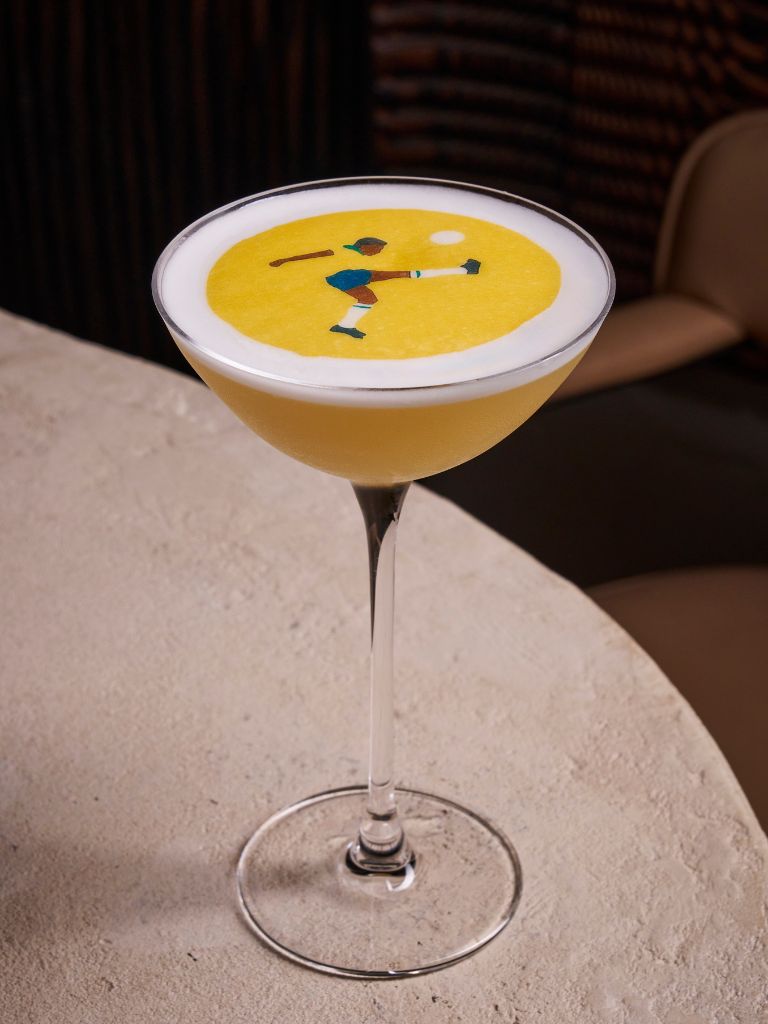
Besides the food, cocktails are another focus, with a good selection of tipples on the menu, including both drinks inspired by Tamba himself and his friends.
The Next Pele (S$28) is probably the most memorable, as it’s garnished with edible rice paper bearing the graphic of a football player.
It’s a nod to Tamba, who was a star player and loved recreating the Brazilian legend’s iconic scissor kick.
Be it for the drinks, the food or the ambience, we think Tamba is such an endearing concept. The details are sleek and the homage is touching.
If there’s one place that showcases the art of decor the best among restaurants in Singapore, this has to be it.
For more ideas on what to eat, read our stories on Newton Food Centre’s hottest stalls and what to expect at Sushiro’s new digital conveyor belt concept!
- Maxwell
